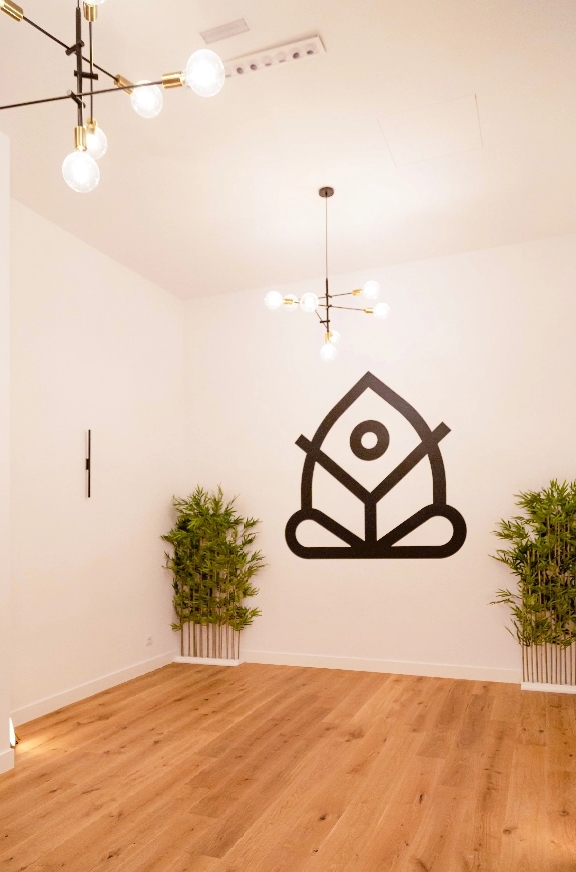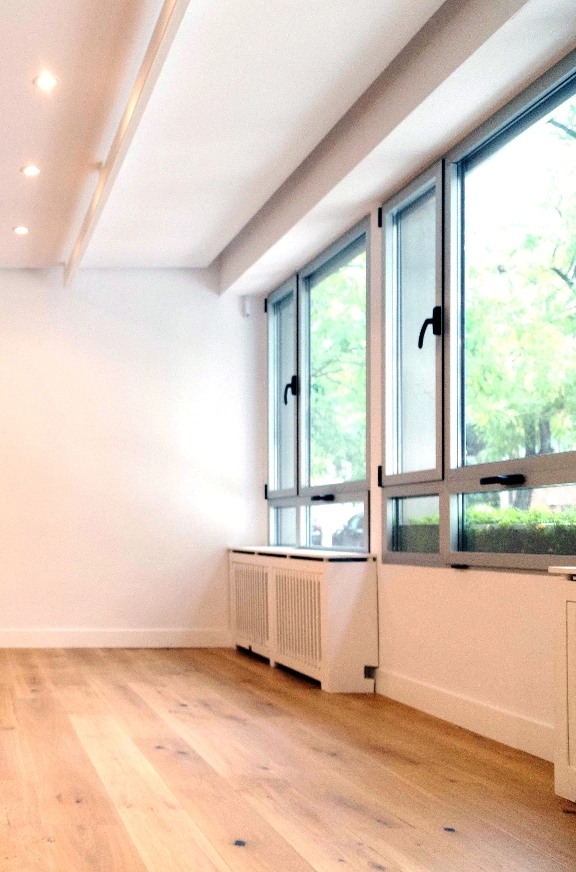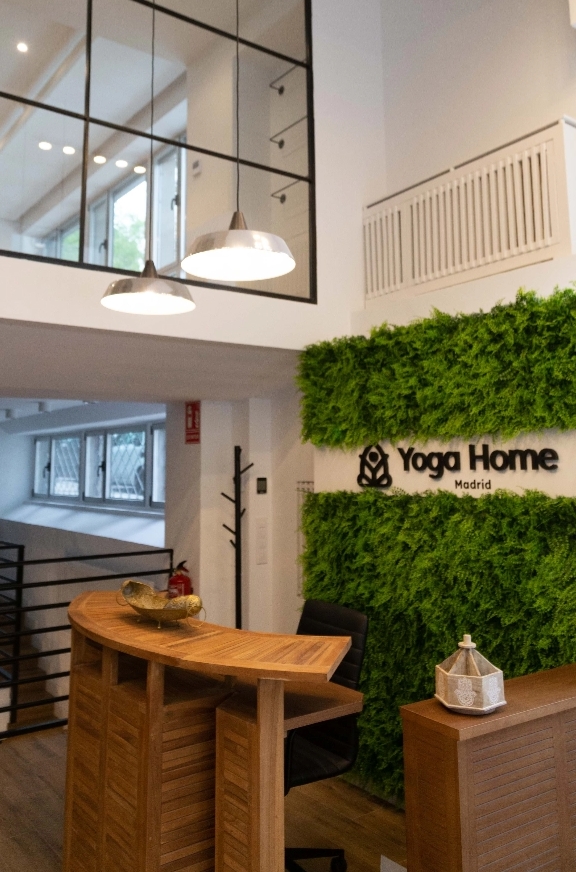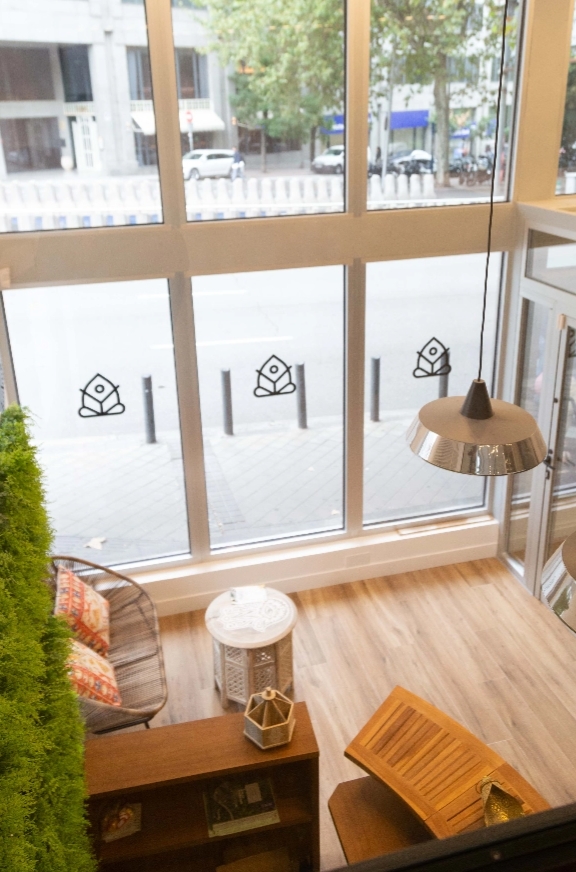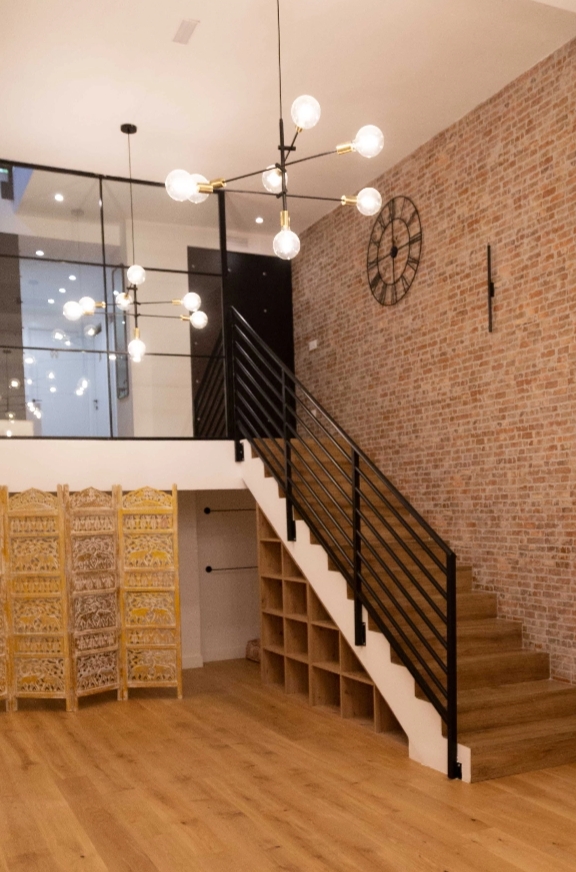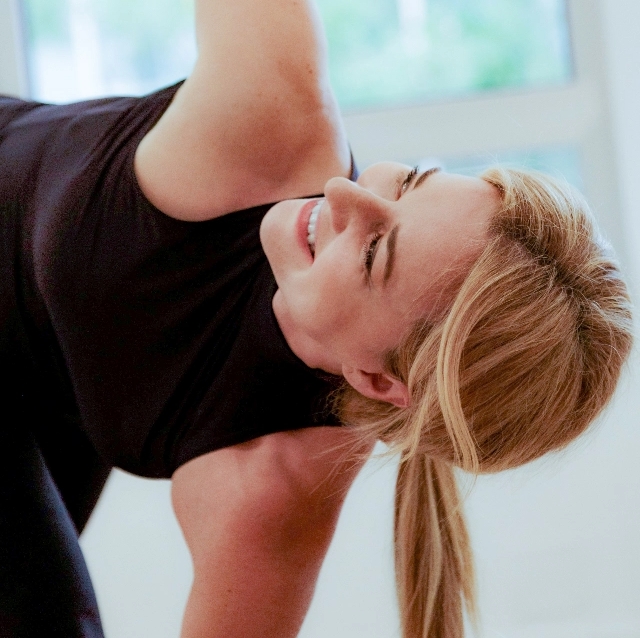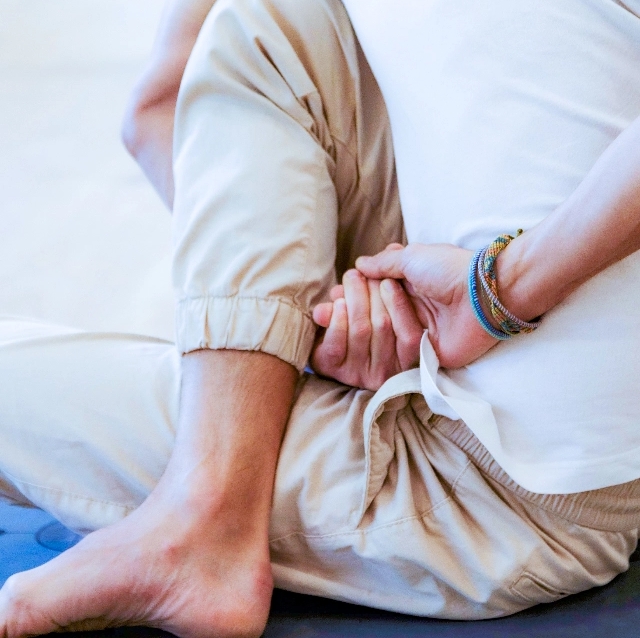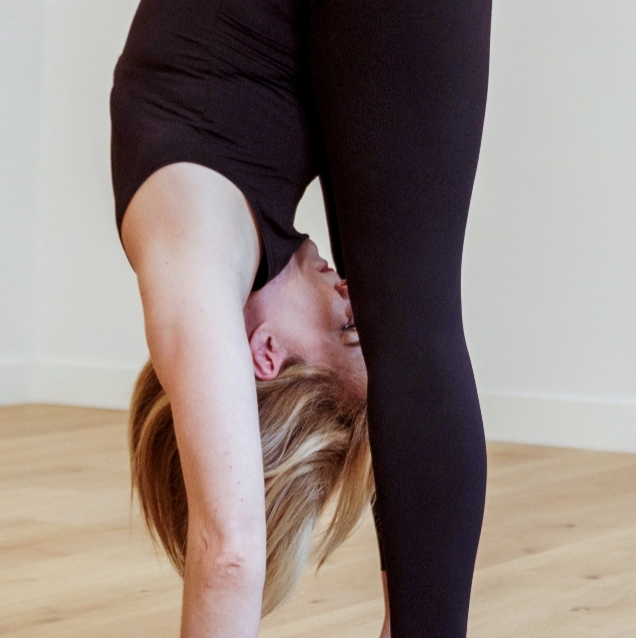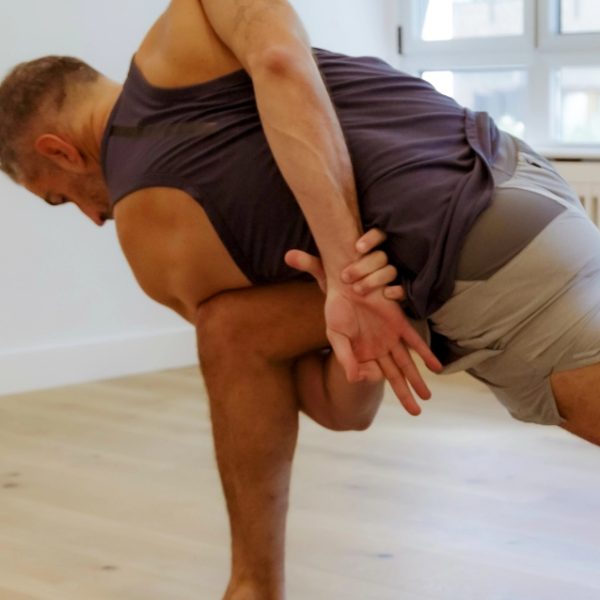
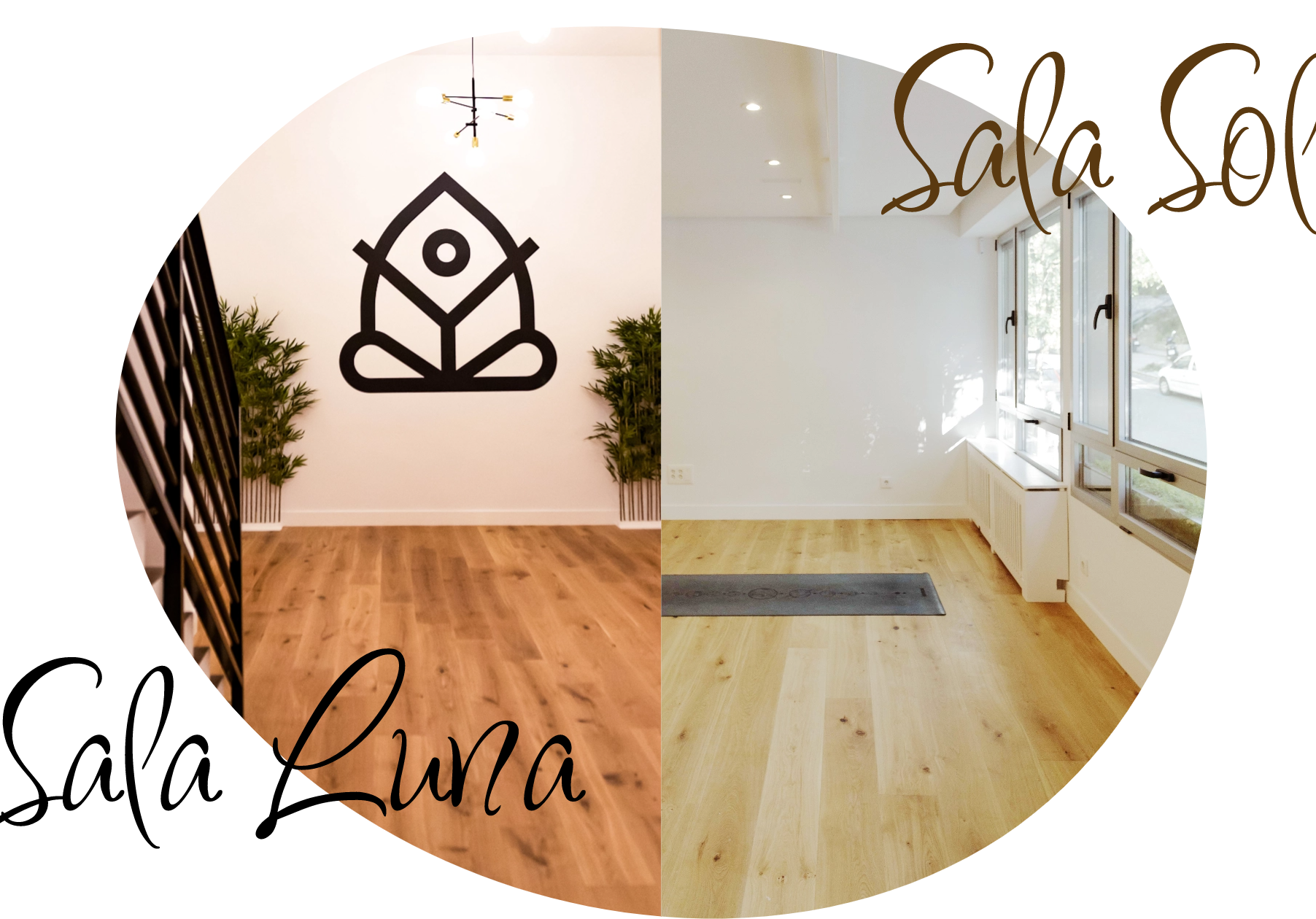

The two rooms have very different atmospheres, as their names suggest, but they complement each other, maintaining balance and equilibrium in the studio.
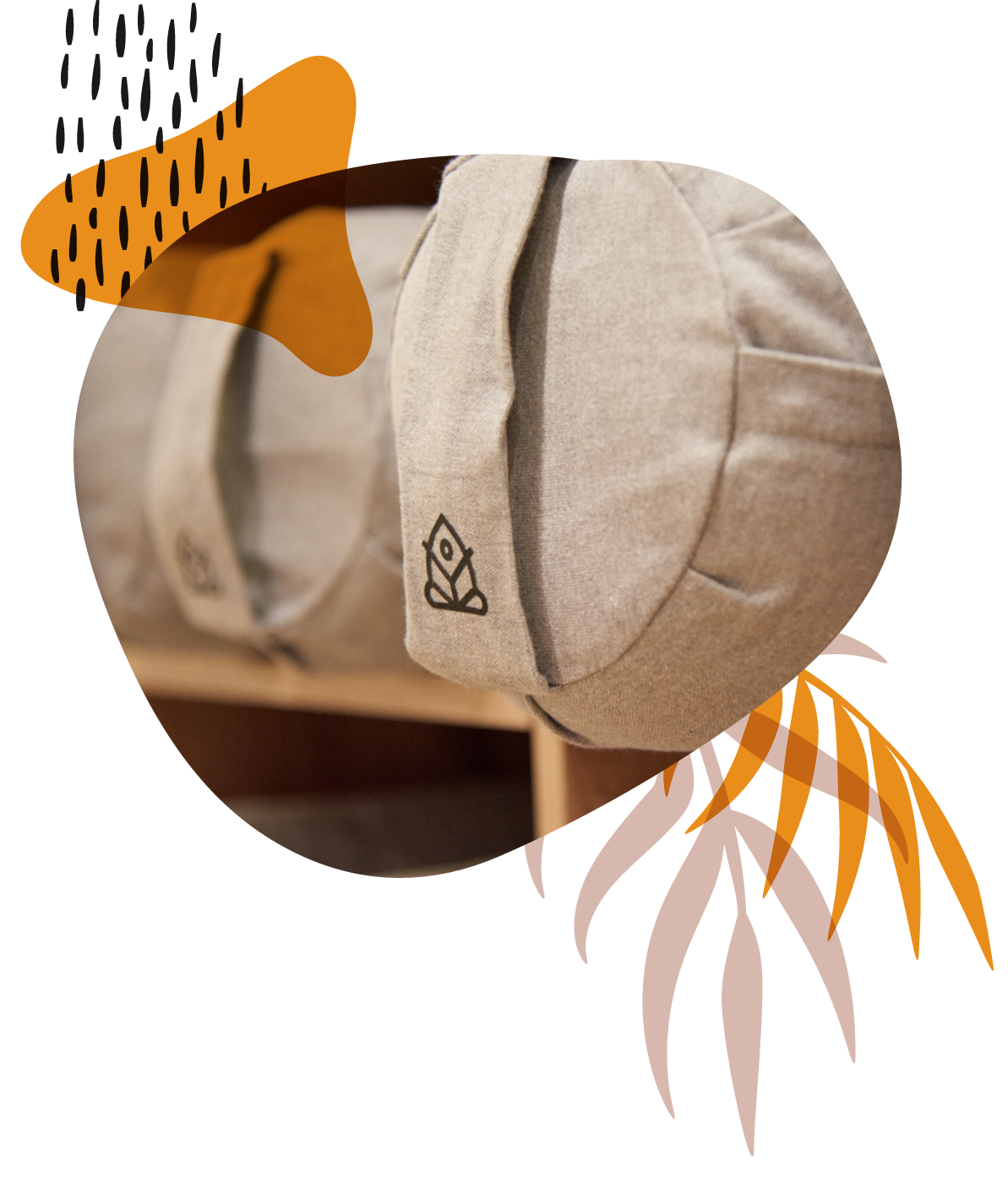
The studio is well equipped with all the materials you may need: high quality mats, as well as all the accessories to help you during your practice: blocks, bolsters, chairs, blankets, belts, etc.
|
Changing rooms |
Showers |
Lockers |
There are various changing rooms, showers and lockers in the studio. Towels are available for hire.
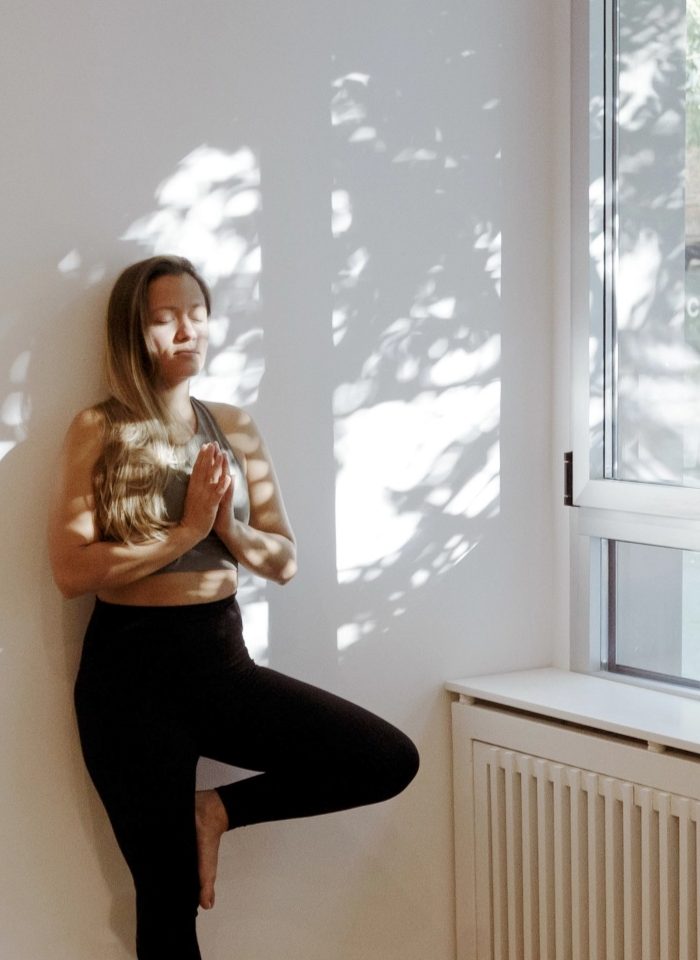
This is one of the three historical schools of yoga, and is in fact the oldest. It incorporates many of the styles of yoga we know today, which focus mainly on the physical aspect. It combines postures with breathing exercises. It allows you to learn the basic concepts and terms used in yoga, both asanas and pranayama.
It is suitable for those just beginning to practice yoga, as the slower pace allows you to focus on each pose, while the movements are easier. It is a simple, gentle, slow and controlled practice in which the poses are held just long enough to learn the details of each pose, but no less intense.
By alternating postures and pauses, periods of tension and relaxation alternate, creating a great harmony between body and mind, aided by breathing techniques.
In Sanskrit, Hatha yoga means the discipline of strength, a strength that seeks to balance the opposing forces within us. In fact, ‘Ha‘ means sun and represents active energy and ‘Tha‘ or moon represents relaxation. The practice usually begins with sun salutations, which activate the body, and ends with savanasa, or relaxation.
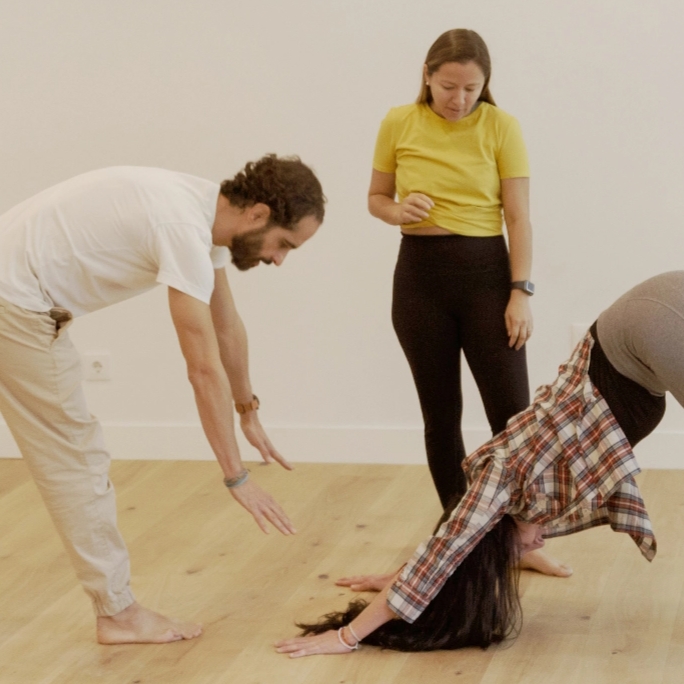
This includes elements of Hatha yoga, but differs in rhythm. While Hatha moves at a slow pace, Asthanga is based on continuous, flowing postures and movements supported by breathing. It is a dynamic yoga that is a more challenging and vigorous practice. There are several different series of sequences in a set order of postures (3 initial series divided into 6).
“Ashtanga means eight steps in Sanskrit: Yama or restraint, Niyama or observance, Asanas, Pranayama or conscious breathing, Pratyahara or introspection, Dharana or concentration, Dhyana or meditation and Samadhi or contemplation.
The practice of Ashtanga is very helpful for those who wish to improve their self-discipline and self-control. As a high-intensity practice, it improves cardiovascular health, tones and strengthens muscles and eliminates toxins.
Due to its high physical intensity, it can be strenuous for newcomers, but is suitable for beginners. By practising regularly and following a specific sequence, it is easy to see the progress made.
Asthanga Myshore is a variation where each student practices individually while the teacher supervises and guides them, correcting each posture.
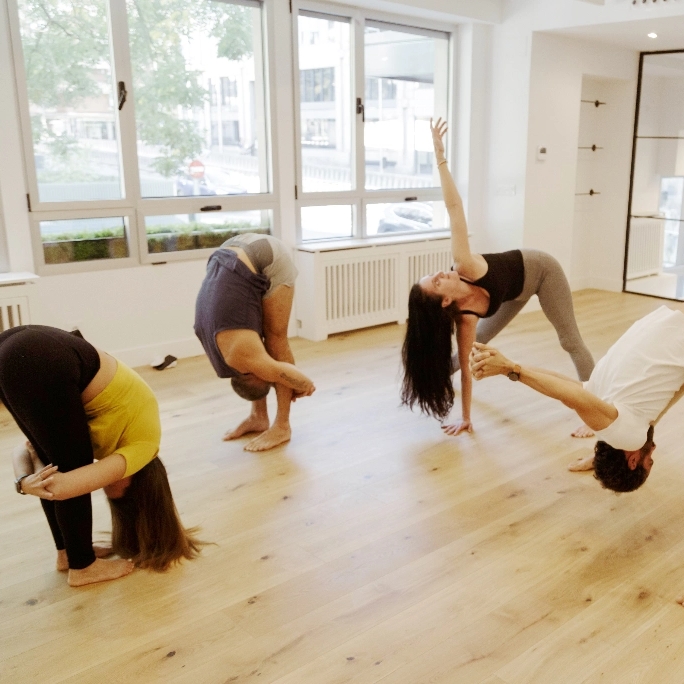
This is a fast-paced form of yoga. Inspired by Ashtanga, it is more intense and physically demanding, but also more flexible and creative as it allows for a free, unscripted series of asanas. It requires endurance, strength and flexibility. As it is one of the most physically demanding yoga practices, it requires a good level of fitness and muscle tone.
It typically focuses on standing poses designed to increase the heart rate. The movements are fluid and energetic. Participants tend to get quite sweaty during this practice. It is ideal for reducing stress, improving cardiovascular health and toning different parts of the body at the same time, while improving concentration, balance and flexibility.
It is a more modern style of yoga that did not originate in India. Its origins can be traced back to the West (USA) in the 1980s. Although it is a style of yoga that gives priority to the physical aspect, it retains the essence of yoga, seeking the union of mind and body through a sequence of asanas and pranayama.
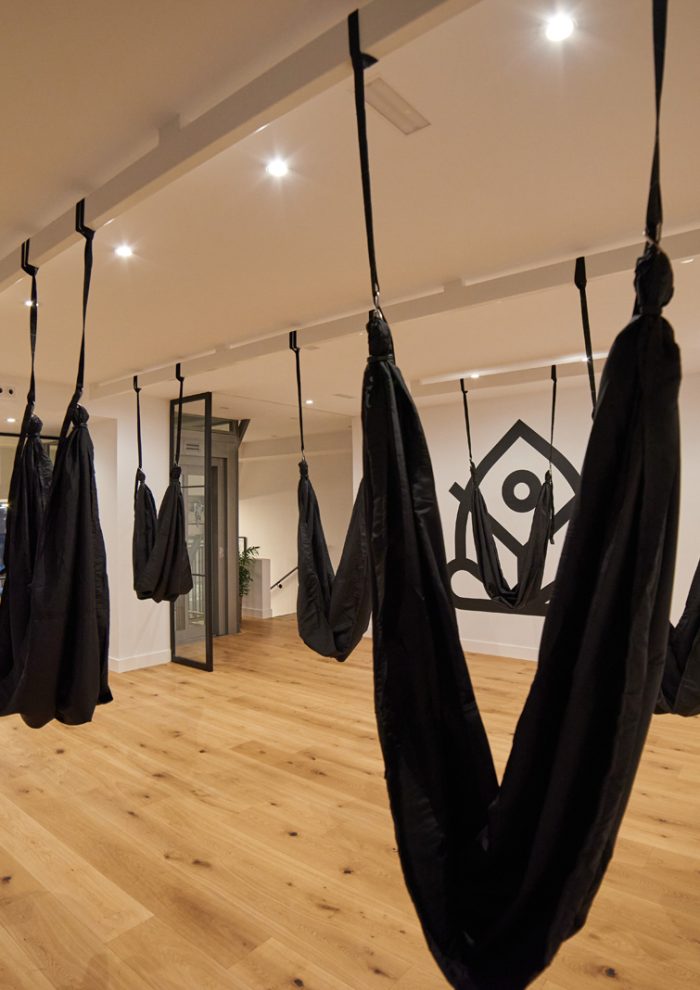
It is practised in suspension, with the help of swings or ropes that allow us to perform traditional yoga postures. These swings can be adjusted in height to reach the floor for certain poses. The foot and hand stirrups help to increase the number of postures that can be performed.
There are many benefits to relaxing while floating in the air. As the postures are not restricted by the floor or walls, the body has more freedom of movement in all directions, including downwards, allowing the muscles and joints to be stretched in new ways. This increases muscle flexibility while protecting the joints, avoiding compression of the vertebrae when inverted and minimising the risk of injury. Circulation is also improved due to the constant changes in posture – many of them inverted – and the physical work required to keep the body in balance.
The Swing material conforms to the body, allowing you to do all the different variations of inverted postures. Although the poses can be held longer, the movement between poses is usually fluid, making use of the energy generated in each pose. The successful execution of a sequence is similar to a dance routine.
It is suitable for everyone. For beginners, the body stays in contact with the floor for longer, while in more advanced classes the postures are acrobatic and performed in suspension throughout the practice.

This is a dynamic yoga in which the postures flow in rhythm with conscious breathing. It can be described as freestyle Ashtanga Vinyasa as it does not follow a structured Ashtanga series. Vinyasa, in Sanskrit, is made up of two concepts: “vi” or the positioning of the body according to a specific sequence, and “nyasa” or a meditative state that promotes concentration on a point and its subsequent “release”. They are therefore transitions or flowing sequences of different postures in sync with the breath.
The transition from one posture to another is always initiated by the breath. All vinyas have a specific dynamic, generally rising or expanding with each inhalation and falling or contracting with each exhalation. When we inhale we are charged with ‘prana’ or nourishing energy and when we exhale we release ‘apana’ or purifying energy. The breath creates the rhythm of movement between the postures and the timing of each posture.
It can be practised by anyone and is even suitable for children. It is recommended that those wishing to begin the practice take a Hatha class to learn the postures that will later be practised in a more fluid way during Vinyasa Yoga. The more advanced Vinyasa Flow practices can be challenging, with a significant amount of aerobic exercise, perfect for burning calories.
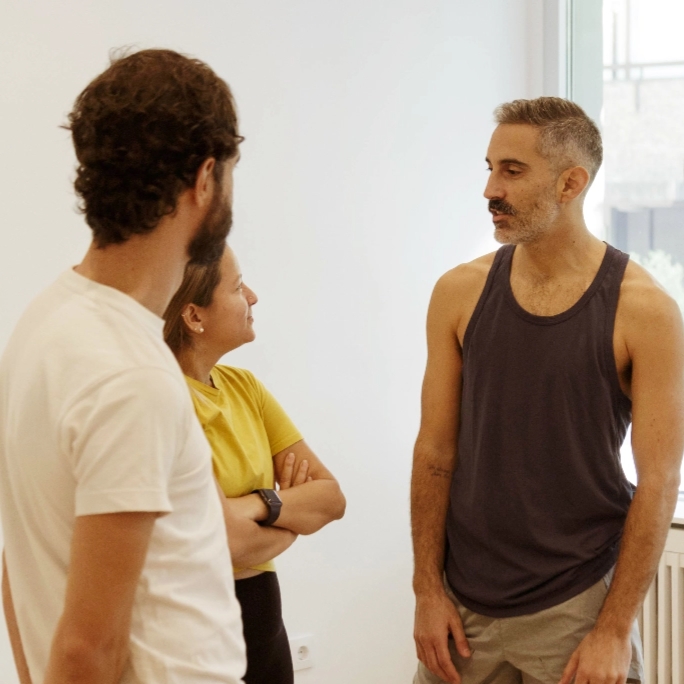
The emphasis of this style is on the technical precision of the postures. Hatha yoga can be seen as its predecessor. A leisurely style of yoga that focuses on achieving the correct postures (by aligning the spine, shoulders, hips and feet). It involves fewer postures than other forms of yoga, but the postures are held for longer periods of time. During the practice, it is essential that the teacher corrects the student until they achieve the perfect posture.
It is ideal for people recovering from an injury or postural ailment, or for those with limited mobility or who are not yet in great physical shape. It is also ideal for those who want to start practising yoga, as it is focused on learning how to execute the different postures well, whilst breathing properly and being fully aware of the posture.
As it uses support equipment such as bolsters, blocks, straps or belts, blankets, chairs, etc., the practice is suitable for everyone, adapting to the needs of each different person. By holding postures for a longer period of time, it helps increase flexibility and muscle strength, whilst also providing a greater awareness of the body.

Yin Yoga is a restorative practice derived from Hatha Yoga, based on static postures held in a relaxed manner for a prolonged period of time. Holding each posture for a longer period of time allows the body and mind to reach a deep state of relaxation. Yin Yoga is a restorative practice derived from Hatha Yoga, based on static postures held in a relaxed manner for a prolonged period of time (between 2 and 10 minutes).
This practice focuses on working the connective tissues (fascia, ligaments, joints, tendons) rather than the muscle mass. Holding each pose for a long but relaxed period of time allows the body and mind to reach a deep state of relaxation.
In yin yoga, most of the postures are done sitting or lying down. It is a more passive practice than other forms of yoga, which is why it works well with other more active styles such as Vinyasa, Power or Ashtanga.
It is suitable for everyone, regardless of fitness or age, and is perfect for beginners as it is very safe and requires very little correction. The state of relaxation achieved allows us to connect with the here and now. As well as managing stress and anxiety, the main benefits are increased flexibility and improved joint mobility.

Yin and Yang are concepts derived from Taoism and represent the duality that exists in all things. Yin and Yang are two opposing and complementary forces that create a dynamic balance. Yin represents the feminine aspect associated with the earth, darkness and passivity. Yang is the masculine aspect, associated with heaven, light and activity.
Yin-Yang yoga is the Yoga of balance, combining the practice of Yin yoga, which is more introspective and slower, working on the deeper connective tissues, with the practice of Yang yoga, which is more energetic and active, developing muscular strength and endurance. The Yin practice provides flexibility, relaxation and cardiovascular benefits, while the Yang practice burns more energy. Classes can begin with the Yin practice to warm up the body before moving on to the Yang practice, or vice versa, ending with the Yin practice after an intense cardiovascular workout to relax and unwind.

It is a gentle, restorative, passive yoga that uses a variety of supports to make postures easier and more comfortable to hold for longer periods of time, accompanied by free and natural breathing. This relaxes both the body and mind. Muscles are relaxed as natural relaxation mechanisms are activated. It is therefore ideal for reducing stress, controlling anxiety or improving insomnia.
The use of various supports (blocks, bolsters, blankets, cushions, belts, chairs, etc.) helps in the execution of the postures, making them comfortable and achievable even for those with little flexibility or some kind of physical ailment or limitation. Its practice rests the nervous system and prepares the body and mind for relaxation. It also improves flexibility through the passive stretching that comes from holding the postures for long periods of time, and corrects bad postural habits.
Most of the postures focus on moving the spine in different directions: twists, bends, extensions, all gentle, to open up and stretch different parts of the body. The most common poses are floor poses (sitting and lying), although there are also some assisted inverted poses to reduce strain and make them easier to hold for longer.
This style has its origins in Iyengar, and although it has some similarities to Yin Yoga, it differs in that it does not use as many supports, but rather uses the body’s own weight and a focus on breathing to relax the body and mind.
It is highly recommended as a complement to other more active practices such as Ashtanga, Vinyasa or Hatha in order to achieve the perfect balance in your practice.

This is a modern style of yoga that has its origins in Ashtanga, but does not follow the traditional series of poses, in that you cannot move on to the next pose in a series until you have completed the previous one. It is a dynamic, powerful and challenging yoga. Like its predecessor, it is structured in a series of three, but each practice does not necessarily have to be the same, leaving room for creativity within the flow. Rocket yoga combines postures from the beginner, intermediate and advanced series of Ashtanga in a balanced way. It is not as rigid as its predecessor as it allows for a more personal touch, allowing you to add different variations to the series as you need or want during each practice, making the practice more dynamic and fluid.
It is a very comprehensive style of yoga, both because it strengthens the core and because it allows you to move at a faster pace by changing the different poses with a few variations or by attempting higher level poses than you normally do, hence the name Rocket.

This is a more spiritual style that has its origins in Hatha yoga. It is a slower style that focuses more on meditation and conscious breathing. It typically begins and ends with chanting, mantras and meditation. The practice involves a sequence of 12 basic postures, accompanied by correct, deep, rhythmic and slow breathing; to achieve a state of deep relaxation for the body and mind. Its principles also include a vegetarian, balanced and natural diet, along with positive thinking, which promotes well-being.
It is a style for those who wish to delve into the more spiritual and meditative side of yoga, strengthening the body and mind, eliminating stress and promoting a positive outlook, without neglecting the benefits of the other styles of yoga, such as flexibility.

Yoga for children is a discipline specially tailored and suitable for the youngest members of the family. For children between the ages of 6 and 12, the practice is approached in a fun and playful way to keep their interest and attention.
The secret of the classes is that they are fun, entertaining, playful and challenging for the little ones while developing skills such as concentration, attention, discipline, strength, memory and relaxation.
Classes are usually shorter and offer a wide range of benefits from an early age, both physically and emotionally. Not only do children become more flexible, improve their balance, posture and body awareness, learn how to breathe, but they also learn to channel their energy, creativity and imagination, develop patience, confidence and self-esteem, all while building friendships, andpersonal relationships.
The postures are basic, challenging them to maintain concentration, balance and patience, while developing good posture and helping to develop their skeletal, muscular, circulatory, respiratory and nervous systems.
Monday – Friday : 07:00 – 21:30
Saturday – Sunday : 09:00 – 14:00
Utilizamos cookies propias y de terceros con fines técnicos, de personalización, analíticos y para mostrarte publicidad personalizada a un perfil elaborado a partir de tus hábitos de navegación (por ejemplo, páginas visitadas). Clica AQUÍ para más información sobre la Política de Cookies. Puedes aceptar todas las cookies pulsando el botón “Aceptar” o rechazar su uso pulsando el botón “Rechazar”.

